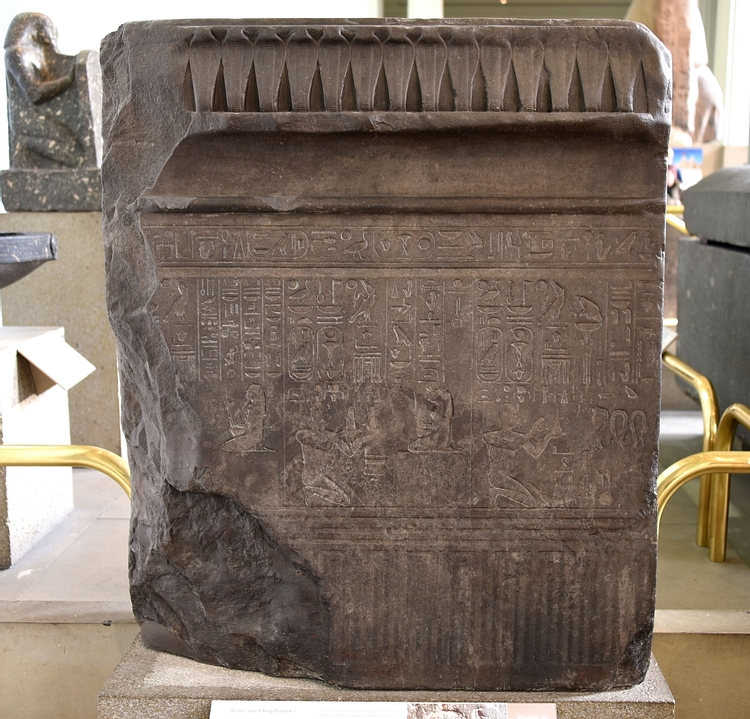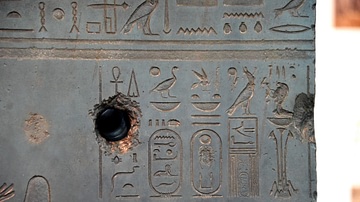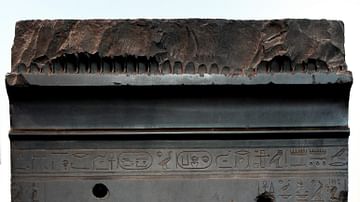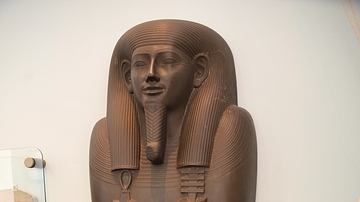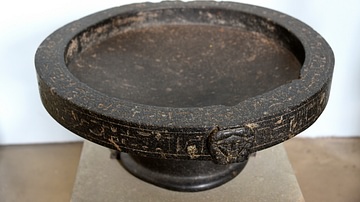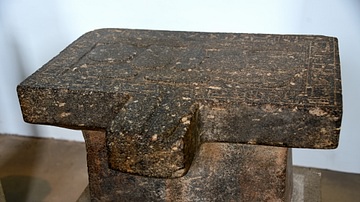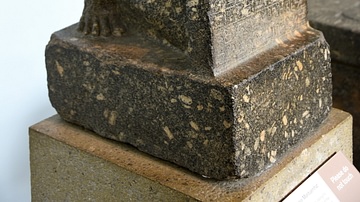Illustration
On this side, Psamtek (Psamtik) I kneels making offerings to fearsome-looking deities, including a double-headed bull god and a snake. The majority hold long knives, as they were meant to guard a sacred space located behind this wall. Most Egyptian depictions of people are highly idealized, but here the king's unflattering features suggest a rare attempt at true portraiture. This deviation from the norm is repeated on a similar screen slab made three centuries later. This slab was part of a structure in the temple of Atum at Heliopolis. The bottom design is a "palace facade". The frieze cobras at the top represent Wadjyt, heraldic goddess of Lower Egypt. That side also shows Psamtek offering, but there his figure, now effaced, was more prostrate. 26th Dynasty, reign of Psamtek I, 664-610 BCE. Found in Alexandria; originally from Heliopolis, temple of Atum, Egypt. (The British Museum, London).
Cite This Work
APA Style
Amin, O. S. M. (2016, July 24). Screen Slab of King Psamtek I. World History Encyclopedia. Retrieved from https://www.worldhistory.org/image/5362/screen-slab-of-king-psamtek-i/
Chicago Style
Amin, Osama Shukir Muhammed. "Screen Slab of King Psamtek I." World History Encyclopedia. Last modified July 24, 2016. https://www.worldhistory.org/image/5362/screen-slab-of-king-psamtek-i/.
MLA Style
Amin, Osama Shukir Muhammed. "Screen Slab of King Psamtek I." World History Encyclopedia. World History Encyclopedia, 24 Jul 2016. Web. 18 Apr 2024.
